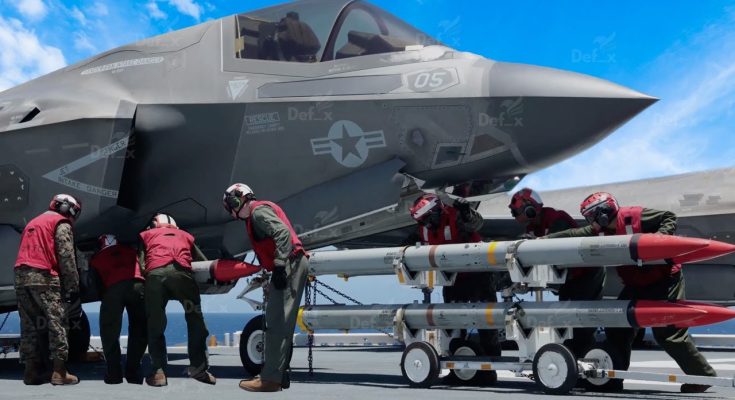U.S. Marine Corps, U.S. Navy Personnel Load Heavy Payloads onto F-35B Lightning II at Sea
In a dynamic show of maritime aviation capability, U.S. Marine Corps and U.S. Navy personnel recently conducted heavy payload loading operations on the F-35B Lightning II aboard a forward-deployed amphibious assault ship. Taking place under operational conditions at sea, this joint evolution highlighted the seamless coordination between services and the versatility of the F-35B — the world’s first operational short takeoff and vertical landing (STOVL) stealth fighter.
The F-35B, flown by Marine Fighter Attack Squadrons (VMFA), is a vital asset in the U.S. military’s power projection strategy. Operating from amphibious assault ships like the USS America (LHA-6) and USS Tripoli (LHA-7), the F-35B brings next-gen stealth, sensor fusion, and precision strike capabilities to regions without the need for land-based runways. Loading heavy ordnance onto these jets while underway requires exceptional coordination between Marine Corps aviators, Navy ordnance crews, and shipboard flight deck personnel — and this latest operation proved that integration is tighter than ever.
Under the roar of aircraft elevators and the controlled chaos of a bustling flight deck, teams moved munitions from below deck magazines to the aircraft staging area. Among the payloads handled were GBU-32 Joint Direct Attack Munitions (JDAMs) and GBU-12 Paveway II laser-guided bombs — precision-guided weapons capable of striking targets with lethal accuracy from standoff ranges.
As the jets were prepped for sortie, Marine Corps ordnance technicians and Navy aviation ordnancemen worked shoulder to shoulder, executing weapons loading procedures with exacting precision. Safety checks, arming sequences, and load verifications were conducted under tight time constraints, all while the ship maintained steady operations in open seas.
“The shipboard environment adds complexity you don’t get at a land base,” said a U.S. Navy Chief Aviation Ordnanceman. “But our training is designed for this. Every movement, every connection, is double-checked. When that aircraft takes off, we know it’s 100% mission ready.”
What makes these operations even more remarkable is the integration of advanced digital systems. Ground crews used Portable Maintenance Aids (PMAs) to wirelessly communicate with the F-35B’s onboard diagnostics, ensuring that the aircraft recognized and calibrated each weapon correctly. These tools drastically reduce the time required to load and certify payloads, enabling rapid turnaround in high-tempo operational environments.
The loading exercise was part of a broader readiness operation testing the “Lightning Carrier” concept — a strategy where amphibious ships, normally used for Marine expeditionary forces, are equipped with multiple F-35Bs to serve as mini aircraft carriers. This concept allows the Navy-Marine Corps team to respond rapidly to crises or threats in contested regions, especially where access for traditional carriers may be limited.
At sea, where adaptability and speed are key, the ability to arm and launch stealth fighters from amphibious decks gives U.S. forces a powerful edge. As demonstrated by this joint Marine Corps–Navy operation, when it comes to delivering precision firepower at sea, the F-35B and the personnel behind it are always ready.



